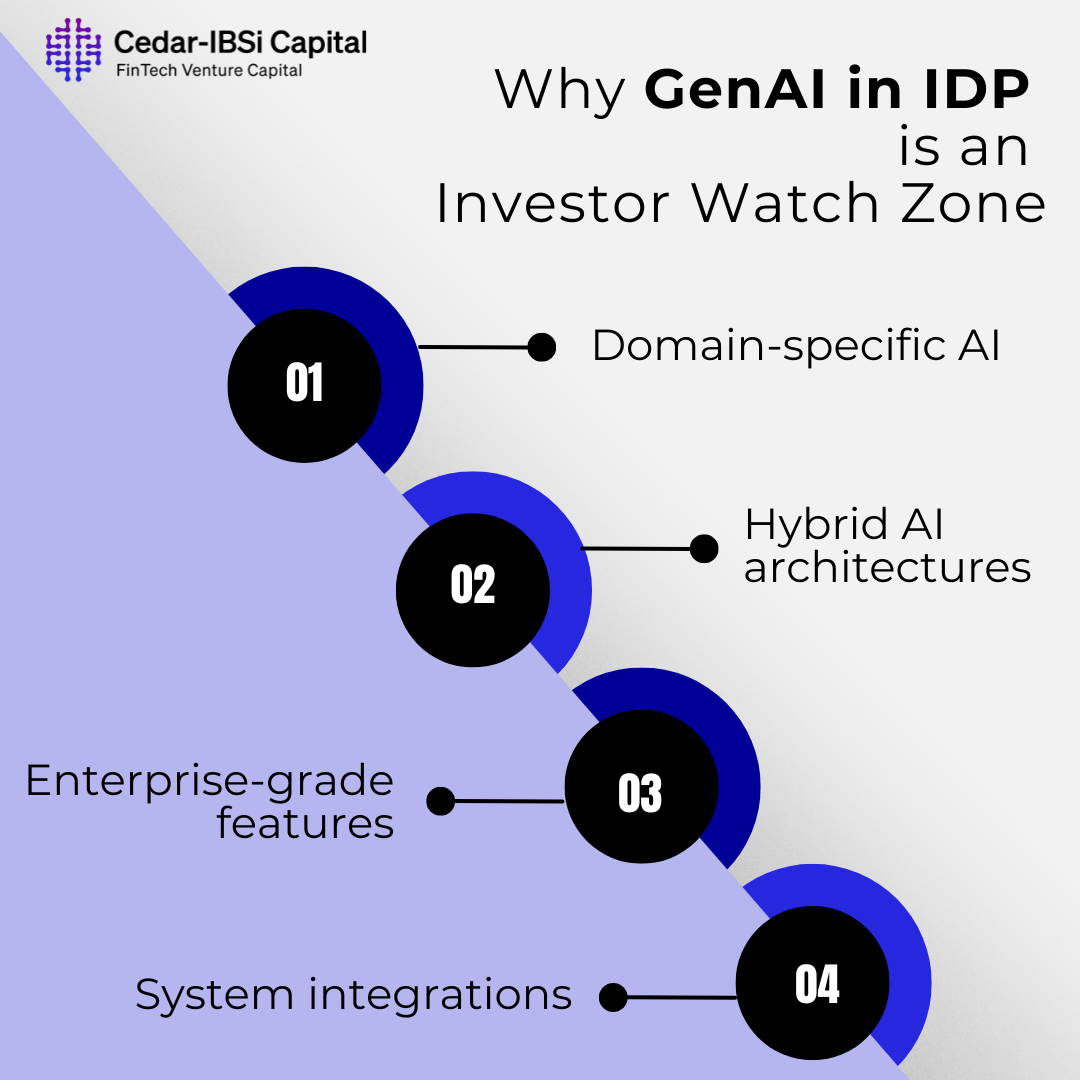As Generative AI (GenAI) continues to disrupt various industries, one area that is drawing significant attention is enterprise document processing. With the promise of automating everything from invoices to onboarding forms, GenAI is fast becoming part of the digital transformation agenda.
But investors and enterprise buyers alike must pause and ask: Does GenAI truly solve the real-world complexity of document-heavy workflows—or merely repackage the same problems with more sophisticated language models?
What Is GenAI-Based Document Processing?
GenAI-based document processing refers to the use of large language models (LLMs) to interpret, extract, and act on data from enterprise documents—contracts, financial reports, KYC forms, etc. Unlike traditional IDP systems that rely on rule-based OCR, GenAI introduces natural language understanding and contextual reasoning.
This evolution is promising, but it is far from being enterprise-ready in its current form.
The Limitations Enterprises Can’t Ignore
1. Hallucinations Are a Risk—Not a Feature
LLMs can confidently generate incorrect or unverifiable outputs—a phenomenon called “hallucination.” In document processing, that can mean extracting a wrong clause, misreading a financial amount, or assigning incorrect metadata. According to Microsoft Research (2024), over 20% of LLM outputs on financial documents contained factual inconsistencies when ungoverned.
For regulated industries like banking and insurance, this isn’t just a glitch but a liability.
2. GenAI Lacks Multi-Document Context
Enterprise workflows are rarely about one document. In loan underwriting or insurance claims, context spans contracts, statements, and regulatory filings. LLMs often process each file statelessly, leading to fragmented understanding.
This is where Cogniquest.ai’s Context-Aware IDP architecture is pushing the boundary. Their InfoRefinery platform maintains cross-document context and domain specificity, enabling more accurate, auditable extraction (Cogniquest.ai).
3. Struggles with Tables, Forms, and Layouts
While LLMs are powerful with prose, they underperform on tables, structured forms, and visual layouts. These formats dominate enterprise content, primarily in invoices, purchase orders (POs), and balance sheets. GenAI must often be paired with OCR and layout analysis tools, complicating implementation.
Cogniquest and other leading players now offer hybrid architectures, combining deterministic models with GenAI to handle these formats.
4. GenAI is probabilistic, and enterprise decisions cannot be
GenAI, by design, is generative and probabilistic. You ask the same question to any of the GenAI applications, and you will get different answers. Enterprise business decisions need high accountability and reliability.
IDPs need to provide grounding to address such concerns, and here is where a blend of Classical AI and GenAI approach works best.
The Bigger Picture: Cost, Privacy, and Infrastructure Fit
- Privacy concerns around cloud-based GenAI APIs remain high. Enterprises demand on-premise or private cloud deployments—especially in jurisdictions bound by GDPR or HIPAA.
- Economic misalignment is another challenge. Token-based pricing (common with OpenAI or Anthropic APIs) doesn’t scale well for high-volume document workloads. Cost predictability is also a challenge.
- Latency matters, too. Real-time document flows—like transaction approvals or credit scoring—can’t afford 5–10 second lag times per call.
Platforms like Cogniquest’s InfoRefinery are responding with privacy-first, scalable deployment options tailored for enterprise IT stacks.

Why This Is an Investor Watch Zone
The global intelligent document processing market is expected to grow from $1.1B in 2021 to $10.6B by 2030 (Allied Market Research, 2023). Yet, only a fraction of that growth will be captured by GenAI-native players.
As investors, the focus should be on:
- Domain-specific AI: Built for BFSI, legal, healthcare—not general-purpose.
- Hybrid AI architectures: These fuse OCR, layout models, Classical AI and GenAI.
- Enterprise-grade features: Data security, auditability, human-in-the-loop workflows.
- System integrations: With CRMs, ERPs, and core banking platforms.
A key signal? Traction in regulated industries and deployment models that align with enterprise governance—not just demo-day sizzle.
Summary: What We’re Really Automating
GenAI alone won’t solve document automation. But combined with contextual logic, orchestration layers, and enterprise readiness, it can significantly reduce manual touchpoints in high-volume, high-risk workflows. Ultimately, the real opportunity is not just automating documents—it’s automating decisions.

